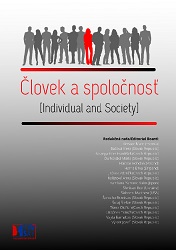Internalization of the Thin Ideal as a Causal Risk Factor and a Mediator of Intervention Effects on Eating Disorder Symptoms in Women
Internalization of the Thin Ideal as a Causal Risk Factor and a Mediator of Intervention Effects on Eating Disorder Symptoms in Women
Author(s): Eva Paulisová, Oľga OrosováSubject(s): Gender Studies, Behaviorism, Health and medicine and law
Published by: Spoločenskovedný ústav SAV, Slovenská akadémia vied
Keywords: Eating disorders; Thin-ideal internalization; Kraemer´s typology; Causal risk factor; Objectification theory; Self-objectification; Body surveillance;
Summary/Abstract: The current cultural definition of female beauty is a source of pressure placed on women to attain extremely thin figures. Incorporation of this standard into how a woman thinks she should look, a desire to attain it and engagement in appearance-invested behaviors refer to the construct of thin-ideal internalization. Three prominent socio-cultural theories of the development of eating disorders propose the impact of internalization of the thin ideal on body image. These are: the socio-cultural model of eating disorders, the tripartite influence model and the objectification theory. Thin-ideal internalization is a widely recognized risk factor in eating disorders in women. Kraemer´s typology of risk factors provides clarification of the terms correlate, fixed marker, variable risk factor, variable marker and causal risk factor for the certain outcome. At the theoretical level and at the level of application to interventions it represents a useful platform for considering possible risk factors for eating disorders. The aim of the current study is 1. to review and discuss recent research findings including experimental studies, and use them to classify the thin-ideal internalization according to Kraemer´s typology of risk factors; 2. to review the existing models of mediation, where the prevention program influences eating disorder symptoms through its effect on thin-ideal internalization; 3. to analyze the inclusion of the construct of thin-ideal internalization within the objectification theory framework. According to Kramer´s typology of risk factors in order to recognize internalization of the thin ideal as a causal risk factor, its manipulation must be shown to change the risk of occurrence of eating disorder symptoms. There are two ways to manipulate the thin-ideal internalization: increasing it in an experimental study or decreasing it in a controlled randomized prevention trial. To confirm its classification as a causal risk factor, more experimental studies with assessment of the internalization of the thin ideal as well as behavioral variables associated with disordered eating are needed. However, randomized prevention trials clearly suggest that internalization of the thin ideal can be classified as a causal risk factor for eating disorders in women. But when the results from prevention trials are taken into account, the question remains as to whether an intervention aimed at targeting thin-ideal internalization does not collaterally manipulate other variables. It can be addressed by studies investigating mediation in a model where the prevention program influences eating disorder symptoms through its effect on the mediator which is thought to be thin-ideal internalization. Reviewed existing models of mediation further support the consideration of the thin-ideal internalization to be a causal risk factor for eating disorders in women. Internalization of the socio-cultural ideal of a slim body has deeper roots in the objectification of the female body that was proposed in objectification theory. The construct of thin-ideal internalization is not explicitly included in objectification theory, although recent studies point to a close relatedness of thin-ideal internalization and variables from objectification theory; self-objectification and body surveillance. A broader model of eating disorder symptoms describing the pathway from the pressure to be thin through the internalization of the thin ideal which could lead to body dissatisfaction and eating disturbances through body surveillance should be verified. It is in contrast with a competing model where the causal relationship between thin-ideal internalization and self-objectification is bidirectional. When considering which factors should be influenced in interventions to produce the required outcome, Kraemer´s typology of risk factors is a useful approach. In designing prevention or intervention programs a causal risk factor has to be targeted because influencing a variable marker will have no effect on the outcome variable. It seems that self-objectification is a causal risk factor as well as thin-ideal internalization, and that programs influencing self-objectification or thin-ideal internalization are equally successful in producing required changes. But as for body surveillance, it is not clear if it is a correlate of disordered eating, variable marker or causal risk factor. In future studies temporal relationships between these constructs (thin-ideal internalization, self-objectification, body surveillance, body dissatisfaction and disordered eating) should be further explored. It seems also useful to implement integrated models of disordered eating in relation to effective intervention strategies with the aim to reduce eating disorder symptoms in women. These studies applying the theoretical models on designing interventions may, in reverse, shed more light on the causal relationships between the factors.
Journal: Človek a spoločnosť
- Issue Year: 23/2020
- Issue No: 2
- Page Range: 11-28
- Page Count: 18
- Language: English

